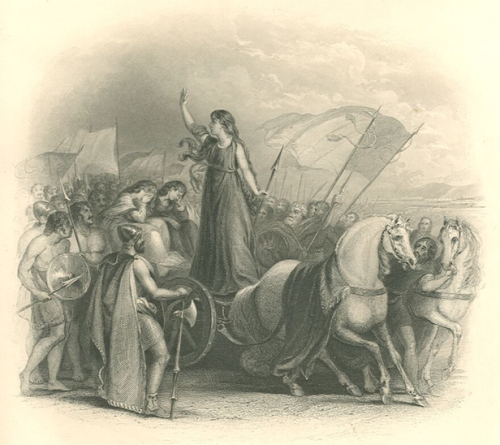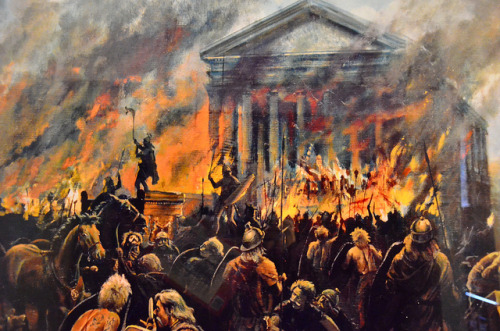Boudicca, Warrior Queen Part II — The Harrowing of Camulodonum and Londinium.In case you misse
Boudicca, Warrior Queen Part II — The Harrowing of Camulodonum and Londinium.In case you missed: Part IDuring the 1st century AD the Kingdom of the Iceni was a client state of the Roman Empire, subservient under the empire, but allowed a measure of sovereignty and independence. Under the terms of his will, the King of the Iceni had left his kingdom to his wife and queen, Boudicca. However the Roman Pro-Magistrate Catus Decianus refused to recognize a female heir, declared the Iceni monarchy forfeit, and annexed the kingdom into the Roman Empire. During the annexation the Romans had taken as much money and valuables as the could and attempted to disarm the people. Worse yet, when Queen Boudicca tried to stop them, Roman soldiers flogged her and raped her two daughters.The conduct of the Romans was the ultimate offense against the Iceni, and a horrifying violation of Boudicca and her family. From then on Boudicca vowed to exact tenfold revenge on Rome. Many of the British tribes flocked to Boudicca’s cause, likewise disgruntled by Roman rule. In a short span of time, Boudicca commanded an army that numbered in the tens of thousands. Her first target was a town called Camulodunum, now modern day Colchester in Essex.Queen Boudicca’s Rebellion occurred at the perfect time. Most Roman forces in Britain were in Northwest Wales fighting a campaign led by Governor Gauis Seutonius Paulinus against the Druids. Most of Britain was left lightly defended. The town of Camulodunum was a Roman colony the was left completely undefended. It had no walls, trenches, ramparts, or any fortifications of any sort. Its only defenders were a small unit of vigils (police and firefighters) who were not equipped for large scale warfare. In AD 60 Boudicca’s forces sacked the city. Queen Boudicca herself commanded her army at the front, riding on a large chariot with her daughters at her side. Over the next two days Camulodunum was destroyed. All buildings were burned to their foundations, all Romans and Romanized Britons were mercilessly executed.After the destruction Camulodunum, Boudicca moved on to the Roman capitol, Londinium (London). 2,000 Roman soldiers of the IX Legion Hispania tried to stop them, however by then Boudicca’s army numbered around 90,000. The Romans were ambushed, surrounded, and quickly annihilated. Like Camulodunum, Londinuium too was unfortified and undefended. Most of the city had been evacuated, including Catus Decianius, the man who played an instrumental role in starting the rebellion. However many Romans stayed, all of whom were slaughtered without pause. Queen Boudicca and her forces exceptionally brutal, even by Roman standards. Men were executed by crucifixion, a popular Roman method of capitol punishment, except a small fire was built under the cross to slowly roast its victims. Noble women had their breasts cut off and sewn into their mouths. Others were impaled on stakes. It is estimated that between Camulodinum, Londinium, and another Roman town called Verulamium (St. Albans), around 80,000 Romans and Romanized Britons were slaughtered. Needless to say, Queen Boudicca was pulling out all the stops when it came to war. Today in both modern day Colchester and London archaeologists have discovered a ground layer of rubble, ash, and bones which serves as a testament to Queen Boudicca’s revenge.To be continued… -- source link
Tumblr Blog : peashooter85.tumblr.com
#history#ancient rome#ancient britain#ancient history#roman empire#boudicca#queen boudicca#boudica#war#british history#rome

